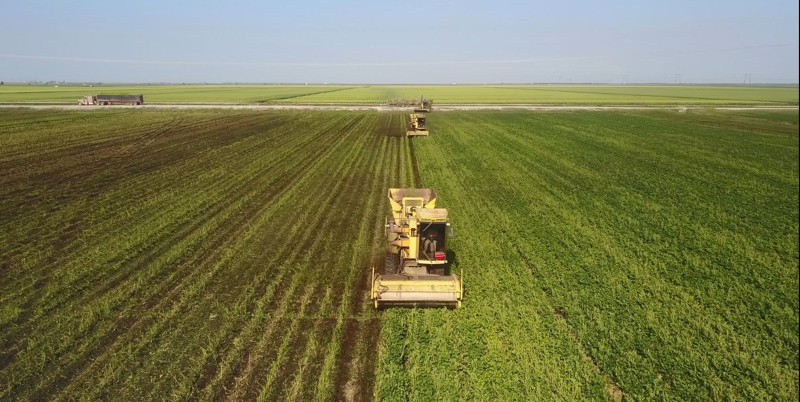
Florida’s farmers are readying for a “technological revolution,” according to a Wednesday morning presentation in the Senate Agriculture Committee.
Those new technologies can better help farmers prepare harvests, diagnose crop abnormalities and deal with invasive weeds and insects. Nathan Boyd, who works as the associate director of Gulf Coast Research Education Center and a professor of horticulture and weed science at the University of Florida, explained the potential benefits to lawmakers Wednesday morning.
“What really caused a significant change in the ways that we can use artificial intelligence in recent times was the development of deep learning, which is simply a computer program that allows us to train computers to be able to detect or recognize different things,” Boyd said. He added that improvements in computer hardware and graphics processing units have also made advancement possible.
“We are in the process of a technological revolution in agriculture. And when we come out on the other end of this, agriculture will never be the same.”
Boyd helps study the science of weeds and how to implement technology to target them. By using deep learning technology, Boyd said farmers will be able to train a computer to recognize weeds inside a field and deploy treatments that target only weeds and not the surrounding crops. Those AI programs are taught to differentiate between photos of weeds and crops, allowing for more targeted treatment efforts.
“Weeds don’t occur in a uniform distribution. They are patchy. So what I work on is the development of a technology that can detect weeds, identify them and then treat only where those weeds occur,” Boyd said Wednesday.
Boyd said one particular model they were working on was nearly 100% accurate and reduced herbicide use in one field by 44%. And those technologies are already being used in existing fields.
“This is not a technology that’s in the future. This is already something that’s available,” Boyd added. He pointed out that Stout, Blue River Technology and FarmWise are companies using that technology in commercial fields today.
Computers will also learn to analyze deficiencies in leaves, looking at patterns or discoloration and diagnosing what nutrition the leaves need.
“All you have to do is pick a leaf off a tree, take a photo of it, use that photo in the program — you submit it to the program that’s on your phone — and it’ll show the results immediately,” Boyd explained. “So all of a sudden, you have a tremendous amount of capability within the hands of a grower regardless of whether you farm thousands of acres or five acres.”
There are other potential ways deep learning can help improve farmers’ efficiency. Computers can help enhance breeding programs by honing in on traits farmers want. AI programs can better predict when a crop will be ripe and project yields for a given period. Boyd laid out what those improvements may look like in the years ahead.
“There are a lot of benefits. For the farmer, you have reduced agrochemical inputs. That means a reduction in production cost (and) reduction in crop damage, simply because you’re not getting as many pesticides on the crop. We’re working toward a reduced reliance on manual labor and improvement of farm income,” Boyd told lawmakers.
“But there are also a lot of benefits simply to the society as a whole. There are reduced pesticide residues on food, reduced impacts on pollinators because you can design them, so you avoid flowers and things like that. You enhance water and nutrient management. You improve crop yields. And subsequently, you can decrease negative environmental impacts that some of the agrochemicals or fertilizers might have on the environment.”
Perhaps the most significant benefit, Boyd said, is a computer’s ability to sort through data collected by farmers to help sort out the signal from the noise.
“In the past, you could have the development of tools and gadgets and things that were very interesting. And you could get a lot of data from growers. But the problem is having it in a way that growers could use,” Boyd said.
That could change with these new advancements.
“You might have a robot that’s going through the field treating for disease. At the same time, it’s acquiring video imagery of the leaves and of insects and weeds, and it’s sending that back to our central platform where it’s giving us input,” Boyd explained.
“While it’s spraying for one disease, it can also detect an insect issue, send a signal back to the grower, and put an alert that this needs to be treated in this part of the field.”
That’s appealing to more extensive agricultural operations aiming to achieve maximum efficiency in the field. But Boyd said as the technology becomes more widely available, its benefits will help farms of all sizes.
“This technology might actually help smaller growers as well as larger growers, and it might reduce the race to size, the feeling that you’ve got to be big to be efficient,” Boyd said. “This might actually help some of the smaller growers be more efficient.”



